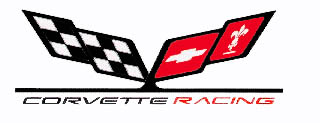|
DETROIT (November 4, 1998) -- After talking with Corvette Chief Engineer Dave Hill, one gets the feeling that racing was in the plan since the inception of the new fifth generation Corvette. You also get the feeling that he would gladly pit "his" C5 Corvette against any other sports car in production today -- regardless of price. You see, Dave is an enthusiast at heart, and his team has developed what's been described as "the best 'Vette yet." When asked what attributes the production Corvette has that will make it a successful racing machine, Hill explains, "The Corvette has always been at the cutting edge of sports car performance. The things that make it a great road car will also contribute to its success as a race car. The car's structural integrity, its suspension geometry, its aerodynamics and the general layout of the car all work together to make it a great car - whether for the road or the track. "The hydro-formed frame rails and the stiff underbody structure combine to make a very stable platform which should in turn contribute to more consistent lap times," he continues. The stable platform also allowed Hill’s engineers to enhance the ride and handling of the production car through suspension tuning. Aerodynamically, the production C5 Corvette is one of the slipperiest on the road today. It boasts a Cd of 0.29, but more importantly, there's very little lift, even at high speeds. This gave GM Motorsports engineers an excellent base on which they could design their wings and other aerodynamic devices to provide additional downforce for the race car. Aerodynamicist Brian Miller stated that the racing Corvette produces so much downforce at speed that it could theoretically drive upside down on the ceiling of a tunnel. "The general architecture of the road car itself will contribute to its success at the track as well," continues Hill. "The low center of gravity and long wheelbase that make the Corvette a very stable vehicle at speed also contribute to making it a comfortable street car, whether it's here on American highways or going 250 kph (155 mph) on the Autobahn." While the C5-R Corvette is a purpose-built racing machine, it does use a surprising number of regular production components. The front and rear chassis cradles are machined to production specs; the stock hydro-formed frame side rails are used as a base for the roll cage; the power steering pump, steering rack, and upper and lower front control arms are all production items, as are the rear lower control arms. The body is loosely based on the production car's CAD data but still uses the production windshield, taillights and marker lights. On the engine side, unique blocks are cast on the production engine casting line and the alternator and water pump are off-the-shelf items. GM Motorsports chassis specialist Ken Brown came to the race project straight from the Corvette development team. His knowledge of internal processes at GM helped greatly in the development of the C5-R Corvette. "We also tried to use as many common processes as we could in developing the race car," Brown says. "Our analysis tools like finite elements and our other CAD/CAM data tools were used extensively. We even tried to use as many production suppliers as possible in our program. Recently, we had an unplanned crash test that proved our production suspension parts would hold up to the rigors of racing. We were very happy with the results." The C5-R Corvette also features a highly specialized - and comfortable - racing seat engineered by Lear Corporation, the global automotive interiors manufacturer that also provides seats for current production Corvette models. The carbon fiber composite shells that Lear engineers developed for the C5-R Corvette have a better strength-to-weight ratio than typical aluminum racing seats. During a pit stop, the seat can be quickly adapted to accomodate any one of the three race drivers who will share the C5-R Corvette driving duties during endurance races. With the C5-R Corvette Racing Project, Chevrolet wants to show the world that the new Corvette is dramatically different from previous models. "We selected the GT2 category because the cars are more like road cars, the race courses are more like real roads, and manufacturers from around the world compete there," says Hill. "We hope to use this race program to illustrate the great characteristics of the Corvette as both a sports car and a race car. This should cause new people to take a look at the Corvette as an alternative to other sports cars. And we've found that once we get people to take a look at the new Corvette, the car sells itself."
|
